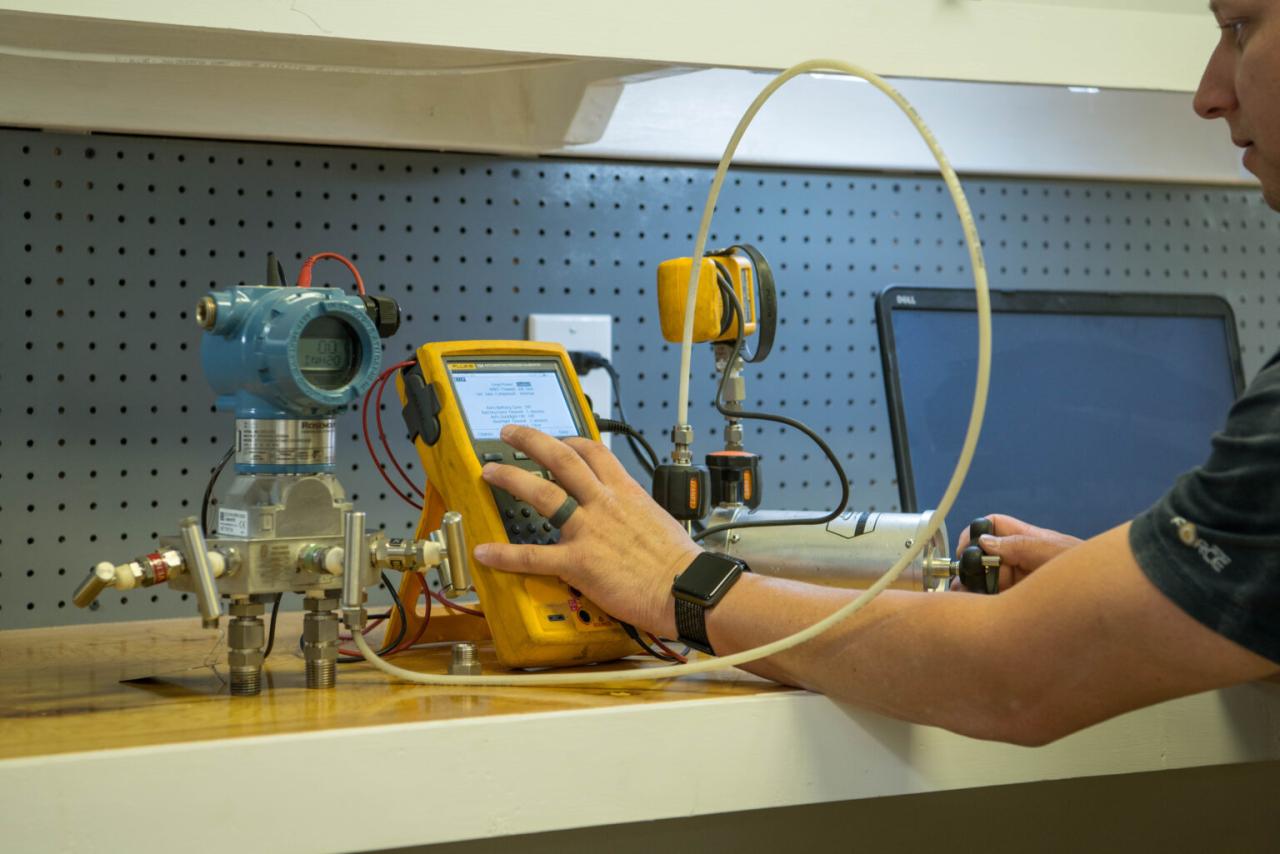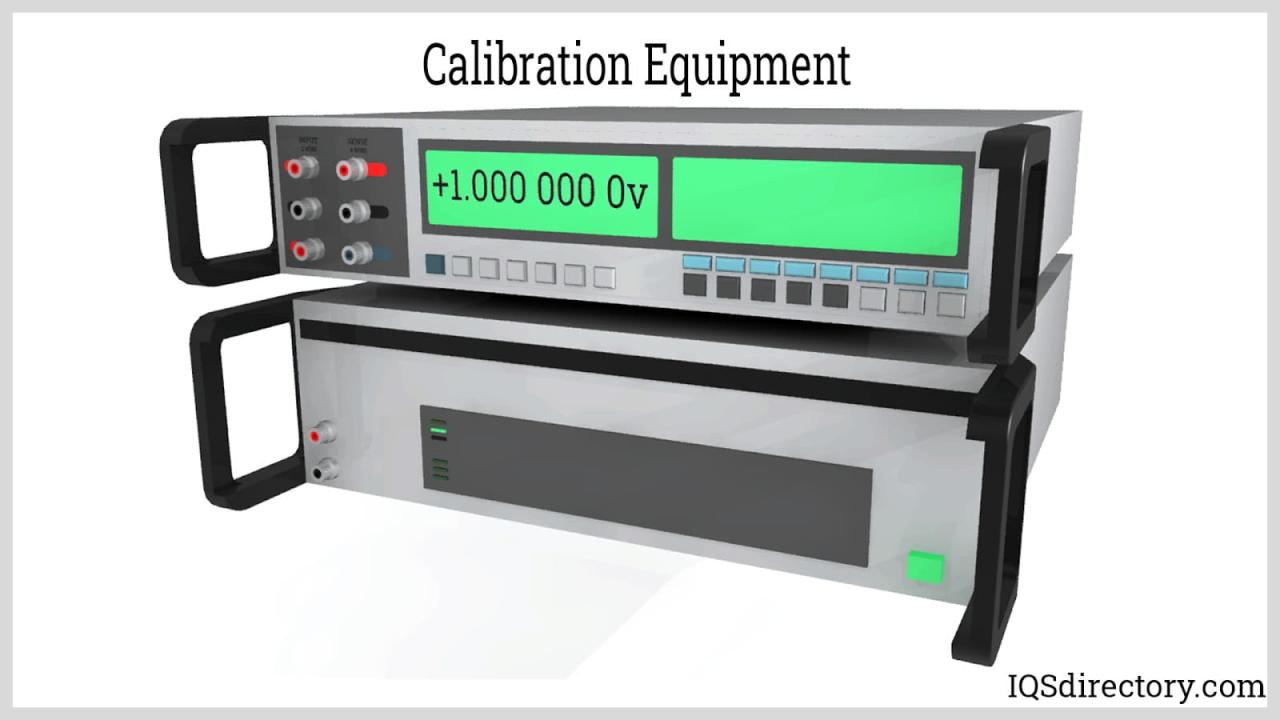Calibration Technologies: Ensuring Accuracy and Precision
Calibration technologies are the cornerstone of accurate and reliable measurements in various industries. From manufacturing and healthcare to aerospace and scientific research, these technologies play a crucial role in ensuring […]

Calibration technologies are the cornerstone of accurate and reliable measurements in various industries. From manufacturing and healthcare to aerospace and scientific research, these technologies play a crucial role in ensuring that instruments, sensors, and systems function as intended.
Calibration involves comparing a device or system’s output to a known standard, allowing for adjustments to be made to ensure accuracy. This process is essential for maintaining quality control, minimizing errors, and guaranteeing safety in numerous applications.
Calibration Equipment and Tools

Calibration is a critical process in ensuring the accuracy and reliability of measurement instruments and systems. It involves comparing the instrument’s output to a known standard, adjusting the instrument to meet specific requirements, and documenting the results. This process relies on a range of specialized equipment and tools designed to facilitate precise measurements and adjustments.
Calibration Equipment and Tools, Calibration technologies
Calibration equipment and tools play a crucial role in ensuring the accuracy and reliability of measurement instruments and systems. They are used to compare the instrument’s output to a known standard, adjust the instrument to meet specific requirements, and document the results. The choice of calibration equipment and tools depends on the type of instrument being calibrated, the required accuracy level, and the specific application.
- Calibration Standards: These are reference instruments or materials that have known and traceable values. They serve as the basis for comparison during the calibration process. Examples include:
- Weight Standards: Used to calibrate scales and balances.
- Length Standards: Used to calibrate rulers, calipers, and other measuring instruments.
- Temperature Standards: Used to calibrate thermometers and temperature sensors.
- Pressure Standards: Used to calibrate pressure gauges and transducers.
- Calibration Instruments: These are specialized instruments used to perform calibration measurements. Examples include:
- Digital Multimeters (DMMs): Used to measure voltage, current, resistance, and other electrical parameters.
- Oscilloscope: Used to analyze and measure waveforms and signals.
- Signal Generators: Used to generate specific signals for testing and calibration.
- Pressure Calibrators: Used to calibrate pressure gauges and transducers.
- Temperature Calibrators: Used to calibrate thermometers and temperature sensors.
- Calibration Software: Calibration software is used to automate the calibration process, manage calibration data, and generate reports. It can also be used to track calibration intervals and manage calibration certificates.
- Calibration Tools: These are auxiliary tools used to facilitate the calibration process. Examples include:
- Calibration Baths: Used to provide a stable temperature environment for calibrating temperature sensors.
- Calibration Chambers: Used to provide a controlled environment for calibrating instruments that are sensitive to environmental factors such as humidity and pressure.
- Calibration Jigs: Used to hold and position instruments during calibration.
Importance of Calibration Equipment Accuracy and Reliability
The accuracy and reliability of calibration equipment are paramount to ensuring the validity of calibration results. If the calibration equipment itself is inaccurate, the calibrated instrument will also be inaccurate. This can lead to errors in measurements, incorrect readings, and potentially costly consequences.
- Ensuring Accurate Measurements: Calibration equipment must be accurate to ensure that the calibrated instrument is also accurate. This is crucial for industries where precise measurements are essential, such as healthcare, manufacturing, and research.
- Maintaining Instrument Reliability: Calibration equipment must be reliable to ensure that calibration results are consistent over time. This is important for preventing instrument drift and ensuring that the calibrated instrument performs as expected.
- Meeting Regulatory Requirements: Many industries are subject to regulatory requirements that mandate the use of calibrated instruments. Calibration equipment must be accurate and reliable to meet these requirements.
- Reducing Costs: Inaccurate measurements can lead to wasted materials, rework, and downtime. Using accurate calibration equipment can help to reduce these costs.
Calibration equipment must be regularly calibrated and maintained to ensure its accuracy and reliability.
Calibration Standards and Traceability: Calibration Technologies

Calibration standards are essential for ensuring the accuracy and consistency of measuring instruments and equipment. They serve as reference points against which instruments are compared, allowing for the determination of their accuracy and any necessary adjustments.
Types of Calibration Standards
Calibration standards come in various forms, each designed for specific applications. They are categorized based on their accuracy, stability, and intended use.
- Primary Standards: These are the most accurate and stable standards, often maintained by national metrology institutes. They are used to calibrate secondary standards and are typically based on fundamental physical constants or natural phenomena.
- Secondary Standards: These standards are calibrated against primary standards and are used to calibrate working standards. They are typically more accessible and readily available than primary standards.
- Working Standards: These are the standards used in everyday calibration activities. They are calibrated against secondary standards and are used to check the accuracy of instruments used in production, quality control, or research.
Traceability
Traceability is a key concept in calibration and ensures that the measurements made using a calibrated instrument can be linked back to a recognized national or international standard. This chain of comparisons ensures that all measurements are consistent and comparable, regardless of where they are made.
- Importance of Traceability: Traceability is crucial for:
- Ensuring measurement accuracy and consistency: Traceability guarantees that measurements are comparable across different locations and times.
- Promoting international trade: Traceability enables the acceptance of measurements made in one country by another, facilitating international trade.
- Enhancing product quality and safety: Traceability ensures that products meet regulatory requirements and safety standards.
- Improving scientific research: Traceability allows for the comparison of results from different laboratories and research institutions.
- Achieving Traceability: Traceability is achieved through a documented chain of comparisons that links a calibration standard to a national or international standard. This chain typically involves a series of calibrations, where each standard is compared to a higher-level standard, eventually leading back to the primary standard.
Wrap-Up
As technology continues to advance, calibration technologies will undoubtedly evolve alongside them. The integration of artificial intelligence and machine learning promises to further enhance calibration processes, making them more efficient, automated, and intelligent. From ensuring the precision of medical devices to optimizing industrial processes, calibration technologies will remain vital in shaping a future where accuracy and reliability are paramount.
Calibration technologies are essential for ensuring the accuracy and reliability of instruments and systems. These technologies are often integrated within a broader framework of operational technologies, sometimes referred to as “OpsTech,” which encompasses the tools and processes used to manage and optimize operational workflows.
To learn more about the scope and importance of OpsTech, you can explore this informative resource: what is ops technology. Calibration technologies play a crucial role in supporting the overall efficiency and effectiveness of OpsTech by ensuring that data and measurements are accurate and consistent.








